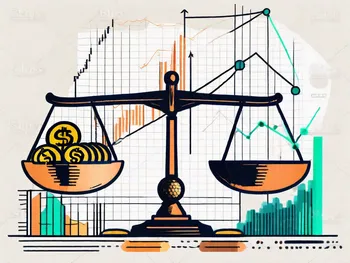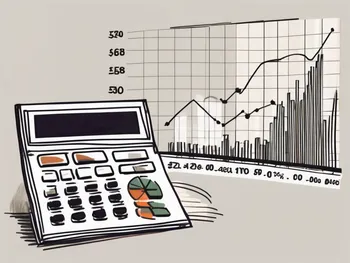Avoid These Common Stop Loss Mistakes Traders Make

Welcome to my guide on avoiding common stop loss mistakes that traders often make. As an experienced trader, I understand the importance of implementing effective stop loss strategies to protect your investments and maximize your profits. In this article, I will discuss the concept of stop loss, the impact of stop loss mistakes on trading, strategies to avoid these mistakes, and the crucial role of discipline in successful stop loss implementation.
Understanding the Concept of Stop Loss
Stop loss is a risk management tool used by traders to limit potential losses by automatically closing a trade if it reaches a predetermined price level. When properly implemented, stop loss orders help to safeguard your capital by preventing catastrophic losses in volatile market conditions.
Stop loss serves as a safety net, allowing you to exit a trade before it goes against you significantly. It is crucial to develop a clear understanding of the importance and basic principles of stop loss to enhance your trading strategy.
The Importance of Stop Loss in Trading
Stop loss orders are vital in mitigating risk and protecting your trading capital. Without a stop loss, you expose yourself to potentially devastating losses if a trade moves against you unexpectedly. By setting a stop loss, you define your maximum acceptable loss and enforce disciplined risk management in your trading approach.
Implementing stop loss orders not only protects against immediate risks but also has a positive impact on your psychological well-being as a trader. It provides peace of mind and helps you stay focused on making rational trading decisions.
Let’s dive deeper into the importance of stop loss in trading. Imagine you are a trader who has just entered a position in a highly volatile market. Without a stop loss, you are essentially gambling with your capital, as you have no predetermined exit strategy if the trade goes against you. This lack of risk management can lead to substantial losses that can be difficult to recover from.
However, by implementing a stop loss order, you are proactively protecting yourself from such losses. You set a price level at which you are willing to exit the trade, ensuring that your losses are limited to a predetermined amount. This not only protects your capital but also allows you to maintain a clear and rational mindset while trading.
Furthermore, stop loss orders can help you avoid emotional decision-making. When a trade starts moving against you, it is natural to feel fear and uncertainty. Without a stop loss, these emotions can cloud your judgment and lead to impulsive decisions, such as holding onto a losing position in the hope that it will turn around. However, with a stop loss in place, you have a predefined plan that takes emotions out of the equation, allowing you to make rational decisions based on your trading strategy.
Basic Principles of Stop Loss
When setting a stop loss, it is crucial to consider the specific market conditions and the volatility of the asset you are trading. A general guideline is to set your stop loss at a price level where the original trade idea is invalidated. This ensures that you exit the trade before it turns into a significant loss.
Additionally, it is essential to avoid setting your stop loss too close to the entry point. Placing it too tightly may result in premature stop-outs due to natural market fluctuations, depriving the trade of the opportunity to develop in your favor.
To determine the appropriate distance for your stop loss, you can analyze the historical price movements of the asset and identify key support or resistance levels. These levels can serve as reference points for setting your stop loss, as they indicate potential areas where the market may reverse or continue its trend.
Another principle to consider when setting a stop loss is the concept of trailing stop. A trailing stop allows you to adjust your stop loss level as the trade moves in your favor, locking in profits while still protecting against potential losses. This dynamic approach to stop loss management can be particularly useful in trending markets, where the price tends to move in one direction for an extended period.
Remember, stop loss is not a guarantee against losses, but rather a risk management tool that helps you control and limit your exposure. It is essential to regularly review and adjust your stop loss levels as market conditions change to ensure they remain effective in protecting your capital.
Common Mistakes in Setting Stop Loss Orders
Even though stop loss orders are a valuable tool, traders often make mistakes that can have significant consequences. Let’s explore two common errors when setting stop loss orders: setting them too close and ignoring market volatility.
Setting Your Stop Loss Too Close
Avoid the temptation to set your stop loss too close to the entry point. While it is essential to limit losses, placing the stop loss too tightly increases the likelihood of premature stop-outs. Consider the average volatility of the asset, recent price swings, and support or resistance levels to determine an appropriate distance for your stop loss.
Ignoring the Market Volatility
Market volatility plays a significant role in determining the appropriate level for your stop loss. Failure to consider volatility can lead to stop loss orders being triggered unnecessarily, resulting in missed opportunities when the trade eventually moves in your favor. Stay informed about market conditions and adjust your stop loss levels accordingly to navigate volatility effectively.
Strategies to Avoid Stop Loss Mistakes
Now that you understand the importance and impact of stop loss mistakes, let’s explore strategies to avoid them and enhance your trading performance.
Proper Position Sizing and Risk Management
One of the essential aspects of stop loss management is proper position sizing and risk management. Determine the maximum percentage of your trading capital that you are willing to risk on each trade. By setting a reasonable risk per trade, you can safeguard your capital and avoid excessive losses.
Additionally, consider using stop loss trailing techniques to lock in profits as the trade moves in your favor. This allows you to protect your gains while giving the trade room to develop further.
Adapting Stop Loss Orders to Market Conditions
Market conditions are constantly changing, and it is crucial to adapt your stop loss orders accordingly. During periods of high volatility, consider widening your stop loss to allow for larger price swings without triggering premature exits. Conversely, in low volatility environments, tightening your stop loss can help protect against potential reversals.
Regularly reviewing your stop loss levels and adjusting them based on market conditions will enhance your trading strategy and financial outcomes.
The Role of Discipline in Successful Stop Loss Implementation
Discipline is paramount when it comes to successful stop loss implementation. Let’s explore key factors that contribute to maintaining discipline in your trading approach.
Sticking to Your Trading Plan
Developing and sticking to a well-defined trading plan is crucial for maintaining discipline. Your plan should include specific rules for setting stop loss orders and outline your risk tolerance. By following your plan consistently, you avoid making impulsive decisions driven by short-term market fluctuations.
Avoiding Emotional Trading Decisions
Emotional trading decisions can lead to poor stop loss management. It is crucial to detach yourself from emotions and make trading decisions based on logic and analysis. Stick to your predetermined stop loss levels and resist the temptation to override them based on fear or greed.
Implementing techniques such as meditation, deep breathing exercises, or journaling can help you remain calm and focused during volatile market conditions, reducing the likelihood of emotional trading decisions.
FAQ – Frequently Asked Questions
What is a stop loss order?
A stop loss order is a risk management tool used by traders to automatically exit a trade at a predetermined price level, limiting potential losses.
Why is stop loss important in trading?
Stop loss is crucial in trading as it helps mitigate risk and protect your trading capital. It defines your maximum acceptable loss and enforces disciplined risk management.
How should I determine the appropriate level for my stop loss?
The appropriate level for your stop loss should consider the market conditions, asset volatility, recent price swings, and support or resistance levels. Avoid setting it too close to your entry point to account for natural market fluctuations.
How can I avoid stop loss mistakes?
To avoid stop loss mistakes, always practice proper position sizing and risk management. Adapt your stop loss orders to market conditions, review them regularly, and maintain discipline by sticking to your trading plan.
What is the role of discipline in successful stop loss implementation?
Discipline is crucial in successful stop loss implementation. It involves sticking to your trading plan, avoiding emotional trading decisions, and making rational choices based on analysis and logic.
What is your personal advice on stop loss management?
My personal advice is to always prioritize risk management and position sizing. Develop a robust trading plan, including well-defined stop loss rules, and follow it consistently. Stay informed about market conditions and adapt your stop loss levels accordingly to optimize your trading outcomes.
In conclusion, avoiding common stop loss mistakes is essential for traders to protect their capital and achieve consistent profitability. By understanding the concept of stop loss, recognizing the impact of mistakes, implementing effective strategies, and maintaining discipline, you can optimize your trading performance and minimize potential losses. Remember, maintaining proper risk management and emotional control are vital elements of successful trading.
Ready to elevate your trading game with the strategies you’ve just learned? Join Morpher, the revolutionary trading platform that’s changing the investment landscape. With zero fees, infinite liquidity, and the ability to trade across a multitude of asset classes, Morpher is your gateway to a world where trading meets innovation. Embrace the power of blockchain technology for a safer, more controlled trading experience, and take advantage of up to 10x leverage to boost your trading potential. Don’t miss out on a unique trading experience with Virtual Futures and fractional investing. Sign Up and Get Your Free Sign Up Bonus today, and start trading the Morpher way!
Disclaimer: All investments involve risk, and the past performance of a security, industry, sector, market, financial product, trading strategy, or individual’s trading does not guarantee future results or returns. Investors are fully responsible for any investment decisions they make. Such decisions should be based solely on an evaluation of their financial circumstances, investment objectives, risk tolerance, and liquidity needs. This post does not constitute investment advice.

Painless trading for everyone
Hundreds of markets all in one place - Apple, Bitcoin, Gold, Watches, NFTs, Sneakers and so much more.

Painless trading for everyone
Hundreds of markets all in one place - Apple, Bitcoin, Gold, Watches, NFTs, Sneakers and so much more.










